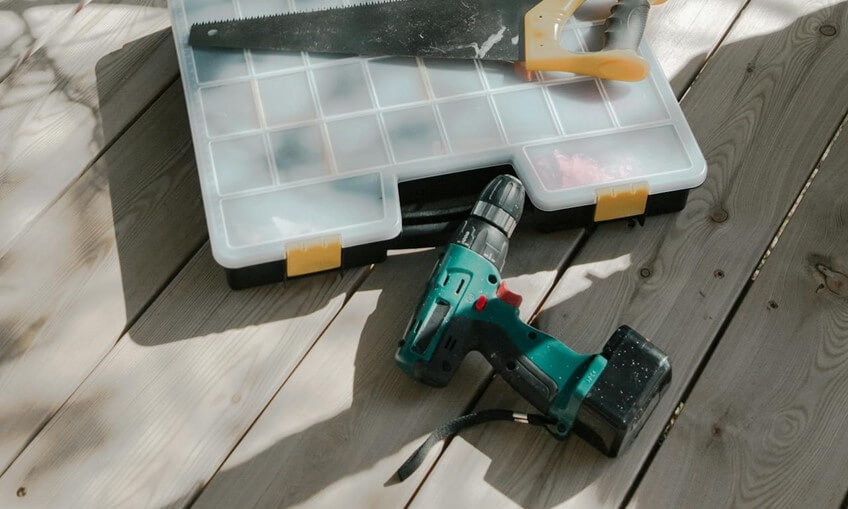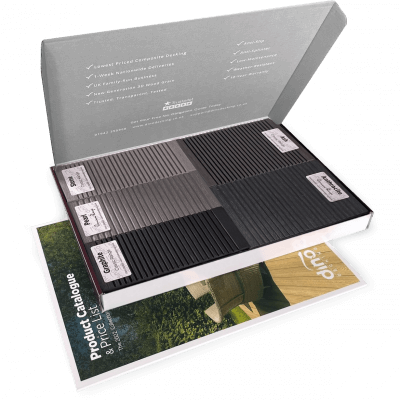5 Composite Decking Lighting Ideas
Our composite decking looks great in any setting, but you can really make your outdoor spaces shine with our decking
Products in Stock
Lowest Prices
Express Delivery
10-Year Warranty
Early April Sale. Up To 15% Off.

Is your deck looking a bit worse for wear? Perhaps you’ve noticed some boards that are starting to rot, warp, or splinter. If so, it might be time to consider replacing those deck boards. Don’t worry, though – with the right tools and a bit of know-how, you can breathe new life into your outdoor space without breaking the bank. In this guide, we’ll talk you through the process of replacing deck boards, step by step.
Before we dive into the specifics, let’s talk about why replacing deck boards is so important. Your deck is more than just a pretty feature of your home; it’s an investment. Regular maintenance, including board replacement when necessary, can extend the life of your deck significantly.
When deck boards start to deteriorate, they can become a safety hazard. Loose, warped, or rotten boards can cause trips and falls, and in extreme cases, they might even collapse under weight. By replacing these boards promptly, you’re not only improving the appearance of your deck but also ensuring it remains safe for you and your loved ones to enjoy.
Moreover, replacing individual boards as needed is often more cost-effective than waiting until the entire deck requires replacement. It’s a proactive approach that can save you money in the long run.
Before you begin, it’s essential to gather all the necessary tools and materials. Having everything at hand will make the process smoother and more efficient.
To replace your deck boards effectively, you’ll need:
As for materials, you’ll need:
When selecting your new deck boards, consider opting for our quality composite decking in UK. Composite decking offers excellent durability and requires less maintenance than traditional wood, making it an increasingly popular choice among homeowners. And with Dino Decking, you can request
Now that you’ve got your tools and materials ready, let’s get started with the replacement process.
Begin by thoroughly inspecting your deck. Identify all the boards that need replacement. Look for signs of rot, warping, splitting, or excessive wear. It’s a good idea to mark these boards with chalk or tape for easy reference.
While you’re at it, check the underlying structure of your deck. If you notice any issues with the joists or support beams, it’s best to address these before replacing the deck boards.
Start by removing any furniture or obstacles from your deck. Then, begin removing the damaged boards. If your deck boards are nailed down, use the pry bar to carefully lift the board, working from one end to the other. For screwed-down boards, you’ll need to remove the screws first.
Take care not to damage the surrounding boards or the underlying structure as you work. If you’re planning to replace all the boards, start at one edge of the deck and work your way across.
With the old boards removed, take a moment to inspect and clean the exposed frame. Remove any protruding nails or screws, and check for signs of rot or damage in the joists. If you find any issues, now is the time to address them.
It’s also a good opportunity to ensure the frame is level. Use your level to check, and make any necessary adjustments before proceeding.
Measure the space where you’ll be installing the new boards and cut them to size using your circular saw. Remember the old carpenter’s adage: measure twice, cut once! It’s always better to double-check your measurements to avoid waste.
When working with different types of materials for decking, be sure to follow the manufacturer’s guidelines for cutting and installation. Some materials may require specific techniques or tools for the best results.
Now it’s time to install your new boards. Start by positioning the board in place, ensuring it’s snug against the adjacent boards. Use your level to check that it’s even.
Pre-drill holes for your screws to prevent splitting, especially if you’re working with hardwood. Then, secure the board using your deck screws. Most experts recommend using two screws at each joist crossing for maximum stability.
Once all your new boards are in place, you’ll want to protect them from the elements. If you’ve used wood boards, apply a coat of exterior wood stain or sealant according to the manufacturer’s instructions. This will help protect your new boards from moisture and UV damage.
For composite decking, follow the manufacturer’s recommendations for cleaning and maintenance to keep your deck looking its best for years to come.

When selecting replacement boards, consider factors like durability, maintenance requirements, and aesthetics. While traditional wood decking has its charms, many homeowners are turning to composite decking for its longevity and low maintenance needs.
Regular maintenance can significantly extend the life of your deck. Clean your deck annually, and re-seal or stain wood decking every few years. For composite decking, follow the manufacturer’s care instructions to keep it looking its best.
Replacing deck boards might seem like a long task, but so long as you’re equipped with the right preparation and approach, it’s a project that many homeowners can tackle successfully. Not only will you save money by doing it yourself, but you’ll also have the satisfaction of improving your outdoor living space with your own two hands.
Remember, if you’re unsure about any aspect of the process, don’t hesitate to consult a professional. And if you’re considering a full deck replacement or upgrade, we’re here to help – at Dino Decking, we can guide you through the process of choosing the perfect decking solution for your home. And you can even try before you buy – order a free sample of our affordable, composite decking today.

Our sample pack contains a sample piece of each colour currently available. Order your free sample pack today to compare the colours and get a true feeling of the Dino Decking range!
Our composite decking looks great in any setting, but you can really make your outdoor spaces shine with our decking
If the idea of having rats under your decking makes you shiver, don’t worry. We’ll let you know the signs
Business hours
Monday: 09:00 – 17:30
Tuesday: 09:00 – 17:30
Wednesday: 09:00 – 17:30
Thursday: 09:00 – 17:30
Friday: 09:00 – 17:30
Saturday: Closed
Sunday: Closed
Contact us
01942 355968
support@dino.co.uk
Collection Address: Unit 1 Wetheral Close Hindley Ind Estate Wigan Greater Manchester North West WN2 4HS
Pages
Products
Testing
Copyright 2025 Dino Decking Ltd All Rights Reserved.
VAT Number: GB296097848.
Company Number: 10837233.